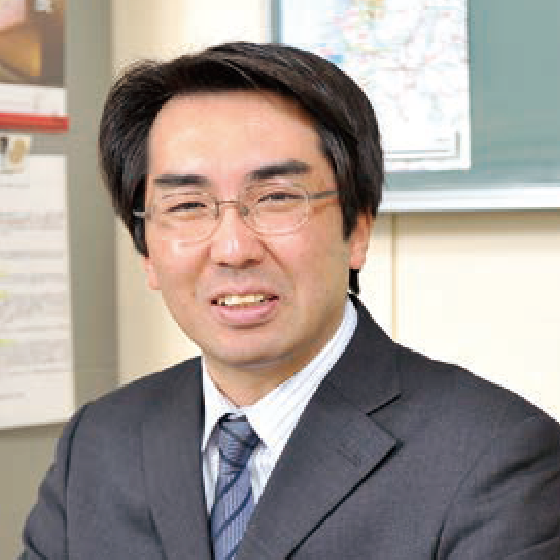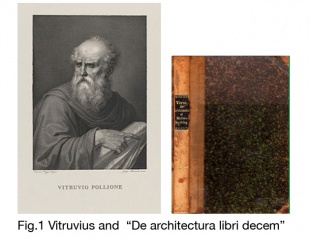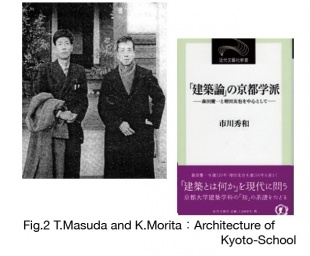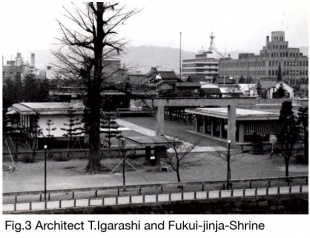- Home
- Faculty Members
- Department of Architecture and Civil Engineering
- Hidekazu Ichikawa
Faculty of Engineering
Department of Architecture and Civil Engineering
- Key words
- Vitruvius, German Architecture, Keiichi Morita, Tomoya Masuda, Theory of Architecture, Kyoto-School, Architectural History, Fukui

Doctor of Engineering / Professor
Hidekazu Ichikawa
Education
National Institute of Technology, Ishikawa College, Department of Architecture
Toyohasi University of Technology, Department of Architecture and Civil Engineering
University of Fukui, Graduate School of Engineering, Master’s and Doctoral Program
Professional Background
Research Associate, Department of Architecture and Civil Engineering, University of Fukui
Associate Professor, Fukui University of Technology
Incentive Award-Architectural Institute of Japan(2002)
Consultations, Lectures, and Collaborative Research Themes
Lectures and technical Consultations:Architectural Theory, Meaning of Dwelling-history, Postwar Reconstruction Period in Fukui Prefecture, Architecture and Philosophy
Main research themes and their characteristics
「Vitruvius’s“De architectura libri decem” and German Architecture in 18th Century」(Fig.1)
The ancient Roman Vitruvius’s“De architecture libri decem” is a most famous Book of architectural theory. This book has influence on a great many architects, Leon Battista Arberti in Renaissance, Andrea Palladio in Baroque, Marc-Antoine Laugier in Neoclassism and Johann Joachim Winckelmann in German–classism. Accordingly this research theme make clear historical meaning of German architecture 18th century and the contemporary meaning of Vitruvius’s theory.
「Architectural Theory of Kyoto-School:Architects K.Morita and T.Masuda」(Fig.2)
Dr. Keiichi Morita(1895~1983)and Dr.Tomoya Masuda(1914~1981)ware classical architects and professors of Kyoto University. K.Morita’s Vitruvius-study and T.Masuda’s Japanese Thoughts-study have formed the architectural theory of Kyoto-School. Accordingly this research theme make clear K.Morita’s Study on European Architecture, T.Masuda’s architectural Design-works, Vitruvius and Modern Japanese Architecture, and the contemporary meaning of the Kyoto-School.
「Architectural History in Postwar Reconstruction Period in Fukui Prefecture」(Fig.3)
A professor-Architect Tadao Igarashi(1915~1987)was a important person of Architectural History in Postwar Reconstruction in Fukui-Prefecture. T.Igarashi’s same generation is famous architects Kenzo Tange(1913~2005)and Hiroshi Ohe(1913~1989).T.Igarashi’s works, Fukui-jinja- Shrine(1957),Fukui Spots-center(1959), Awara Golf-Club-House(1960)are in existence. Accordingly this research theme make clear the contemporary meaning of T.Igarashi’s Architectural Theory and Works.
Major academic publications
H.Ichikawa “Vitruvius and Doric-Oder of Greek –Winckelmann and German Architectural Theory-”
「Architectural Design-Theory」Chuokouronbijyutsu Press(2016)p311~330 ISBN 978-4-8055-0757-5
H.Ichikawa “A Study on BUTSUMA in Echizen-Fukui’s Traditional Farmhouse Type -Architectural Theory of Dwelling-” Journal of the Society of HOKURIKU URBUN HISTORIANS, no.24, p1~8(2018)
H.Ichikawa「Architectural Theory of Kyoto-School:Between Keiichi Morita and Tomoya Masuda」
Kindai Bungeisya Press(2014)ISBN 978-4-7733-79-7966-2



